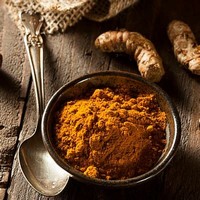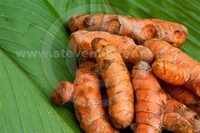Facts about Turmeric
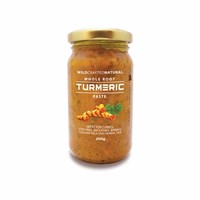
Turmeric added to such oils as sesame oil and olive oil extends their shelf life due to its antioxidant properties (Schonbeck and Frey 2005).

Turmeric, which has a bitter, pungent flavor, commonly is used as a spice in curries and other South Asian and Middle Eastern cuisine.

The rhizome of turmeric is fleshy, oblong, tapered at either end, and from 5 to 10 centimeters (2-3 inches) in length and about 2.5 centimeters (1 inch) wide (Schonbeck and Frey 2005).

Sangli, a town in the southern part of the Indian state of Maharashtra, is perhaps the largest and most important trading center for turmeric in Asia.
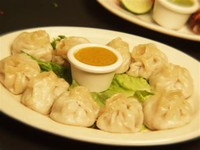
Momos (Nepali meat dumplings), a traditional dish in South Asia, are spiced with turmeric.

Turmeric also is used as a food additive (coded as E100) to protect food products from sunlight.

Zingiberaceae, the flowering plant family to which turmeric belongs, is known as the "ginger family," and contains aromatic perennial herbs with creeping horizontal or tuberous rhizomes.
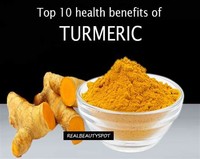
Turmeric perhaps is best known as a spice and is widely used for such purposes in South Asian and Middle Eastern cooking.

Turmeric rhizome contains a volatile oil, a yellowish coloring material known as cucurmin, brown coloring matter, gum, starch, calcium chloride, and woody fiber (Schonbeck and Frey 2005).

According to a 2005 article in the Wall Street Journal titled, "Common Indian Spice Stirs Hope," research activity into curcumin, the active ingredient in turmeric, is exploding.

Curcumin is the active substance of turmeric and it is also known as C.I.

Turmeric contains up to 5 percent essential oils and up to 3 percent curcumin, a polyphenol.
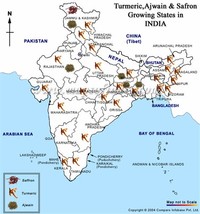
Among areas that turmeric is cultivated are India, Sri Lanka, East Indies, Fiji, and Queensland, Australia (Schonbeck and Frey 2005), as well as the Caribbean in the Western Hemisphere.

Turmeric has long been used in Eastern medicine, including both Oriental herbal medicine and Ayurveda, the Indian traditional medicine.

Native to tropical South Asia, turmeric thrives in warm, humid climates, generally with temperatures above 60°F (29.8°C) for best growth (Schonbeck and Frey 2005), and a considerable amount of annual rainfall.

The name turmeric also is used for the dried, powdered rhizome that is popular as a spice and food color, as well as used medicinally.

In Ayurvedic medicine, turmeric is thought to have many medicinal properties and many in India use it as a readily available antiseptic for cuts, burns, and bruises.

Turmeric makes a poor fabric dye as it is not very lightfast (the degree to which a dye resists fading due to light exposure).

Turmeric offers a unique taste and visual experience for human beings in their experience of nature.

Turmeric also is known as kunyit (Indonesian and Malay), Besar (Nepali), haldi (Hindi), arishina (Kannada), pasupu (Telugu), or manjal (Tamil) in Asian countries.

Turmeric paste is used by some Indian women to keep them free of superfluous hair.

Turmeric is also used to give a yellow color to some prepared mustards, canned chicken broths and other foods (often as a much cheaper replacement for saffron).
